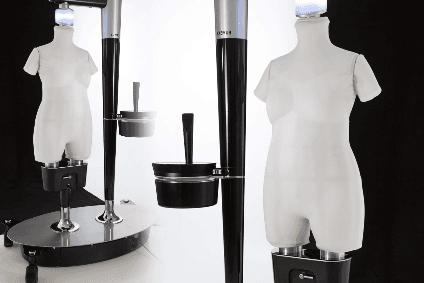
A scalable mannequin that is said to be able to recreate 80% of female morphologies and help slash prototyping costs won an innovation award at the Consumer Electronic Show (CES) in Las Vegas earlier this month.
Driven by Euveka’s proprietary design software, each mannequin is designed to replicate as closely as possible the curves and contours of the human body. It replaces the need for dozens of different mannequins and can recreate 80% of the body shapes of Caucasian and Asian women, its developer says.
The result of six years of research and technological development, Euveka’s Connected Mannequins are aimed at designers in all sectors of the fashion industry from custom-made haute couture to mass market and sports.
They can change shape and size in seconds, evolving fully (or by specific zone) in height or width according to a scale for a given garment – with heights ranging from 1.55m to 1.80, from size 8 to 18, and a range of body types from 17 to 77 years old. Shoulders, bust, chest, waist, hips, thighs, height – and overall shape – can all be adjusted independently.
Not only do they enable the production of clothing for each customer size or target market, but they facilitate manufacturing processes by saving time and cutting prototyping costs. They also have environmental benefits by helping to reduce textile waste from unnecessary samples.
Founded in 2011, the French start-up has secured EUR3.5m in two rounds of funding to finance its development, and has also participated in workshops in New York and Los Angeles to introduce its innovation to the US market.

US Tariffs are shifting - will you react or anticipate?
Don’t let policy changes catch you off guard. Stay proactive with real-time data and expert analysis.
By GlobalDataAs well as its smart connected dummies and proprietary software to help fashion, sport and medical professionals in prototyping and making personalised clothes, the company specialises in robotic technologies related to morphology and biomimicry.




